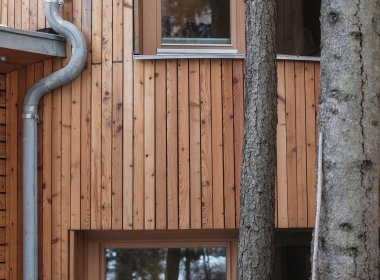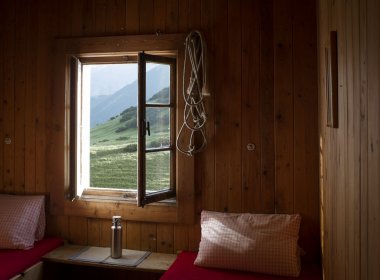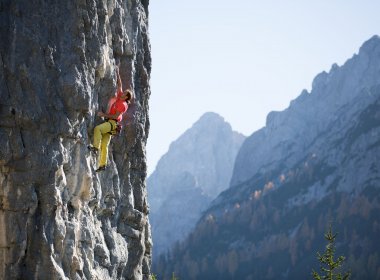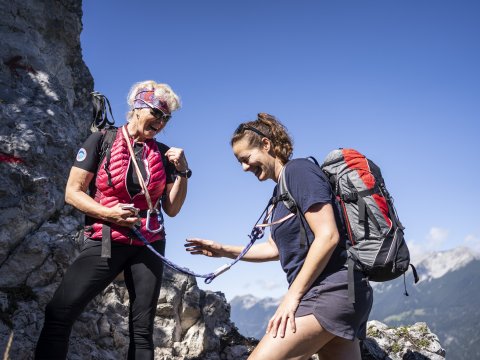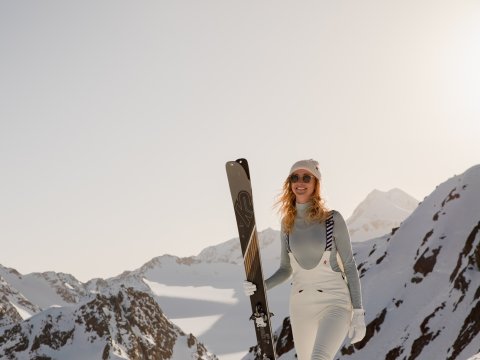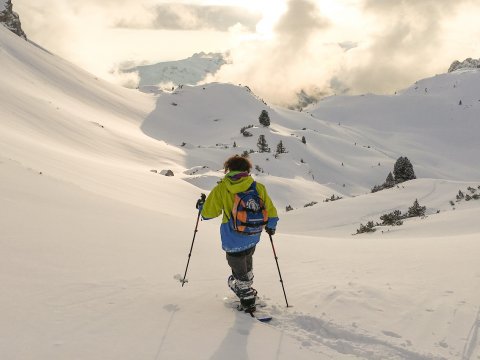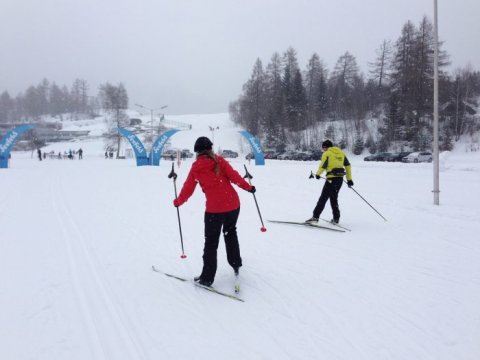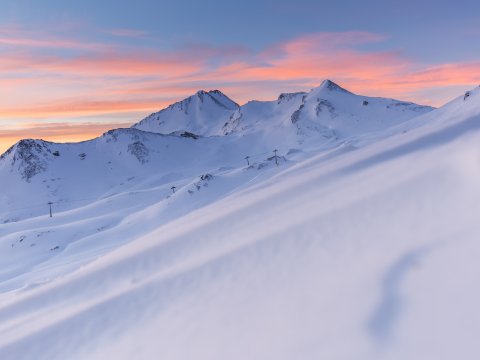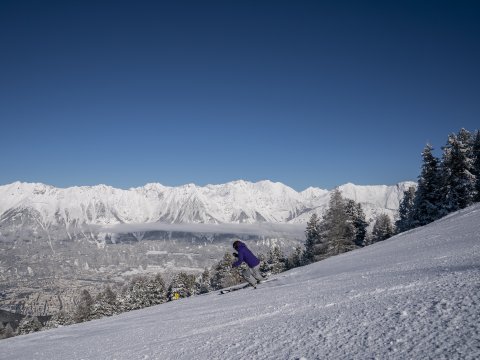Which Kind of Climbing Is Right For Me?
Bouldering, sport climbing, alpine climbing, indoor, outdoor – the term ‘rock climbing’ actually covers a multitude of different styles and techniques, each of which requires specific skills and expertise if you want to stay safe and have fun. We’ve put together a handy climbing guide to help you find out what kind of climbing is right for you – and where you can learn how to do it.
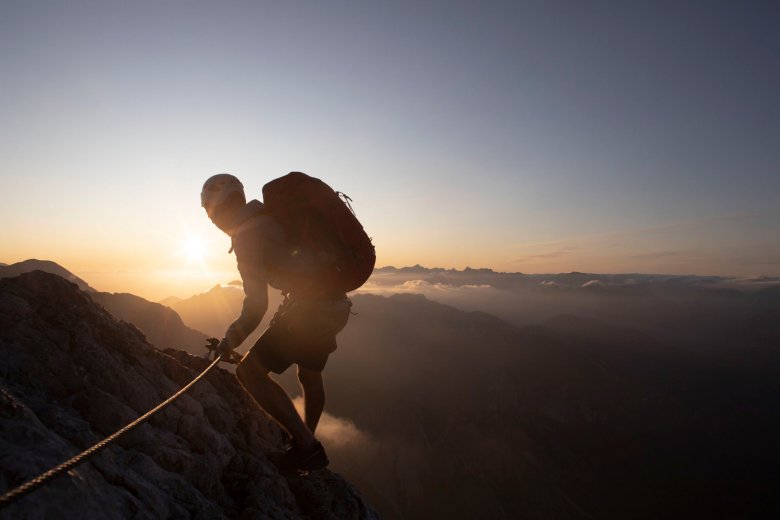
1. Indoor bouldering
What is it?
Bouldering is climbing without a rope and belay device – usually only up to a height from which you can safely jump down. The hard plastic holds get smaller and further apart as the level of difficulty increases. The routes are short and varied, and it is easy to switch back and forth between different challenges.
Who is it suitable for?
Everyone! Total beginners as well as advanced climbers and professionals who want to hone their technique in bad weather enjoy the benefits offered by bouldering. This style is particularly suitable for children as a good way for them to try climbing for the first time.
Where can you learn it?
There are bouldering facilities in almost all regions of Tirol. Sometimes they are part of larger indoor climbing centres. For beginners, for example, the Bergstation in Telfs is a good place to become familiar with the sport. It has around 140 different boulder problems and offers two-hours introduction courses for teenagers and adults.
2. Outdoor bouldering
What is it?
The big difference between bouldering indoors and outdoors is that on the rock there are no clearly defined handholds and footholds. Instead, climbers must find holds in and on the rock’s natural cracks and ledges. Many routes also include overhanging sections. Bouldering mats made of thick foam are used for protection. These can be folded up for easy transport to and from the rock. In some cases, a person known as a spotter stands directly behind and beneath the climber in order to catch them if they fall.
Who is it suitable for?
Outdoor bouldering is ideal for climbers who have already gained some experience of bouldering indoors, have their own climbing shoes and are looking for a challenge in the fresh air.
Where can you learn it?
You will find large rock formations suitable for bouldering more or less everywhere in Tirol. Mandlers Boden in the Pitztal Valley is a popular spot. The boulder blocks it contains range from 3a ("low difficulty") to 7a ("high difficulty", experts only). There is also a good alternative bouldering location at the Silvapark near Galtür.
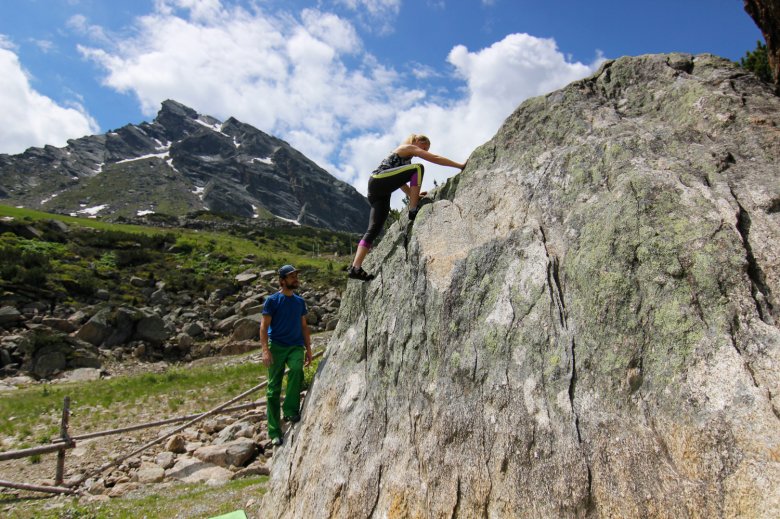
3. Via ferrata
What is it?
Via ferratas are climbing routes with iron handholds and footholds as well as a steel rope anchored to the rock from start to finish. Climbers wear hiking boots, a climbing harness, a mountaineering helmet, gloves and a via ferrata set with two carabiners that are clicked into the steel rope for safety. Via ferratas are often also included as part of challenging hikes.
Who is it suitable for?
For all hikers looking for an extra adrenaline kick in the mountains and, of course, who have the necessary equipment, stamina, surefootedness and a head for heights. Beginners and children should not use via ferrata climbing routes on their own.
Where can you learn it?
Basic via ferrata courses are offered in all climbing regions by mountain guides certified by the Austrian Alpine Club. Recommended for families is the via ferrata at the Stuibenfall waterfall, giving climbers the opportunity to experience Tirol’s highest waterfall up close.
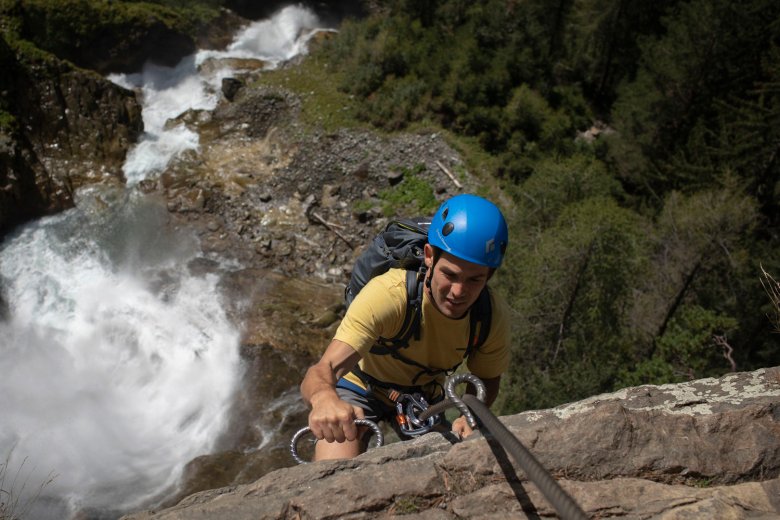
4. Indoor sport climbing
What is it?
Indoor sport climbing challenges climbers to take on routes of varying difficulty with colour-coded handholds and footholds. The climbing routes are usually between 5 and 25 metres above the ground, depending on the size of the indoor climbing centre. Unlike with bouldering, sport climbers are secured via rope attached to a belay device being operated by a second person on the ground.
Who is it suitable for?
Indoor climbing is ideal for beginners – it lets you try out the sport of climbing under controlled conditions. The necessary equipment – climbing shoes, harness and rope – can usually be hired from the climbing centre. Indoor sport climbing is also popular with experienced climbers who want to stay fit and train their technique after work in the evening.
Where can you learn it?
The largest climbing hall in Tirol with more than 500 sport climbing routes is located in the provincial capital, Innsbruck. Innsbruck Climbing Centre is also a popular place for professional climbers to train and offers an extensive range of courses. There is also a large outdoor area open in good weather.
5. Outdoor sport climbing
What is it?
This variation of sport climbing is similar to indoor sport climbing with the difference that climbing outdoors is more unpredictable. Cracks, ledges and irregularities in the rock serve as holds. In climbing gardens, as outdoor sport climbing areas are known, the routes are defined by safety hooks attached to the rock at regular intervals. The climber then attaches ‘quickdraws’ (two carabiners connected by a strong piece of semi-ridged material) and clips the safety rope into one of the carabiners so, should they fall, they can be caught by the person belaying them on the ground. Most sport climbing routes outdoors are a maximum of 25 metres in length. As well as climbing shoes, a helmet, a belay device, carabiners and a harness, climbers carry a bag with magnesium to dry their sweaty hands and give them maximum grip on the rock.
Who is it for?
For all those who have already gained some experience indoors and ideally have their own equipment. Beginners and children should always be belayed and guided by an experienced climber. A first aid kit should be available in case of emergency.
Where can you learn it?
Free courses are offered by the organisation SAAC. Among others, the Wiesensee climbing garden near St. Ulrich am Pillersee is considered good for beginners and families. Depending on the route you choose, the rockface is either relatively gentle or overhanging.
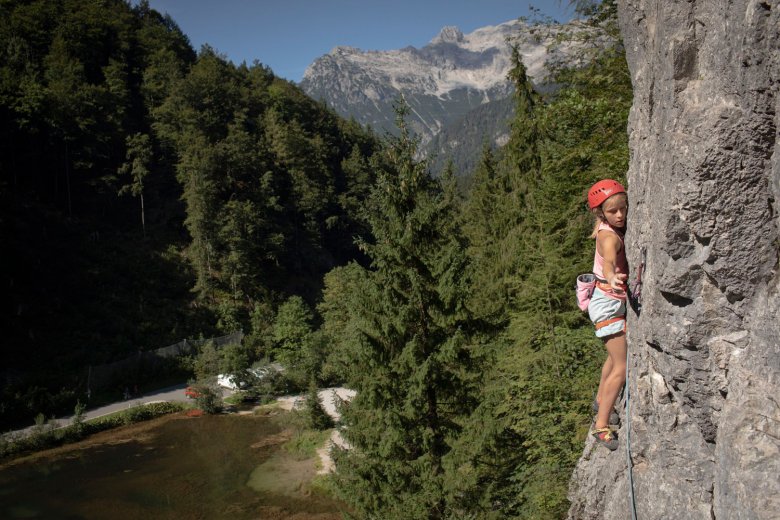
6. Alpine sport climbing
What is it?
The difference between this type of climbing and outdoor sport climbing is that here the routes take up more than one rope length. Such routes as known as multi-pitch – two climbers are always on the move together, connected by a rope and belaying each other alternately. One climbs ahead and hooks the safety rope into an existing piton anchored to the rock. Once he has reached a belay station – usually a wide ledge – the other climber follows and brings the rope with him. Routes particularly well secured with pitons are referred to as "plaisir climbing".
Who is it suitable for?
Advanced climbers. Beginners should definitely have trained indoors beforehand and be able to assess their physical and mental strength. Once you're on the rock face, you can't go back! Less experienced climbers should try short routes with an experienced climbing instructor and in good weather.
Where can you learn it?
Climbing instructors can be found through the Austrian Alpine Club and its local branches. They can best assess which routes are suitable for which ability.

7. Alpine climbing
What is it?
Alpine climbing usually refers to multi-pitch routes where only part of the route is equipped with safety hooks. The climbers have to set the rest themselves. This requires not only suitable tools, but also skill and the knowledge of when and where it is best to attach a so-called mobile belay device or piton. In free climbing, the hooks are basically only used for belaying. In technical climbing, the pitons can also be used actively for movement, for example by pulling oneself up on them if there are no other holds or ledges.
Who is it suitable for?
Where there are pitons, the risk naturally increases. This form of climbing is therefore only recommended for experienced climbers.
Where can you learn it?
With patience and perseverance, practice and in the company of experienced climbers.
8. Adventure climbing
What is it?
On your own into the unknown! In adventure climbing there are no safety hooks and thus nothing to help you find your way. When choosing the best route to the summit, climbers can and must find their own way – meaning they must also pay much more attention to their surroundings and safety. Any hooks placed in the rock by the first climber are usually pulled out again by the second, leaving the wall "clean".
Who is it suitable for?
Experienced alpine climbers only!
9. Free solo climbing
What is it?
Climbing alone without a safety rope or any other safety equipment. This makes "free solo" the most extreme form of climbing, as it offers no form of protection if you fall. A dangerous undertaking not for the faint of heart. Climbers who fall off are likely to die.
Who is it suitable for?
Free solo remains a daring specialism for just a few professional daredevils, especially when the routes climbed are challenging and high above the ground.










